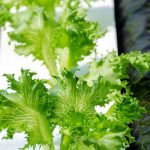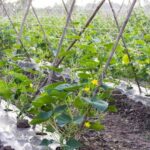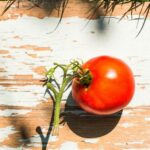Are you interested in starting a vegetable garden in Australia? Vegetable gardening in Australia can be a rewarding and fulfilling endeavor, allowing you to enjoy the fresh produce grown from your own backyard.
Whether you have a large yard or limited space, there are plenty of options for growing vegetables in Australian climates. In this article, we will explore the best vegetables to grow, soil preparation and maintenance, pest control and disease management, watering and irrigation tips, seasonal planting guide, small space gardening tips, as well as resources for vegetable gardeners in Australia.
Australia’s diverse climate offers unique challenges and opportunities for vegetable gardening. From the tropical northern regions to the temperate south, there are specific vegetables that thrive in different parts of the country. Understanding the local climate and soil conditions is essential for successful vegetable gardening. Additionally, taking advantage of community and online resources can provide valuable support and knowledge-sharing with other Australian vegetable gardeners.
In this comprehensive guide to vegetable gardening in Australia, we will cover everything from preparing the soil to harvesting and storage tips. Whether you are a beginner or experienced gardener, there is something for everyone looking to cultivate their own fresh produce right at home. So let’s dive into the world of vegetable gardening in Australia and get ready to enjoy bountiful harvests.
Best Vegetables to Grow in Australian Climates
When it comes to vegetable gardening in Australia, choosing the right vegetables to grow can make a big difference in the success of your garden. With its diverse climate and weather patterns, Australia offers a range of options for vegetable growers. Here are some of the best vegetables to consider for Australian climates:
Warm and Tropical Climates
In Northern Australia and other tropical regions, heat-loving vegetables thrive. Consider growing tomatoes, capsicum, eggplant, chillies, okra, sweet potatoes, and herbs such as basil and lemongrass. These vegetables love the warm temperatures and can produce bountiful harvests in these climates.
Mild Temperate Climates
For areas with mild temperatures such as parts of New South Wales, Victoria, and Tasmania, cool-season vegetables are ideal. Options include broccoli, cauliflower, peas, carrots, spinach, lettuce, kale, and Brussels sprouts. These vegetables can withstand cooler temperatures and will flourish in these regions.
Arid Climates
In inland areas with arid or semi-arid climates like the Outback or parts of Western Australia and South Australia, drought-tolerant vegetables are best. Consider planting zucchini, pumpkin, melons, onions, garlic, carrots and beets which can handle hot temperatures and limited water availability.
By selecting the right vegetables for your specific climate in Australia,
Soil Preparation and Maintenance for Vegetable Gardening
When it comes to vegetable gardening in Australia, soil preparation is crucial for the success of your plants. Australian soils vary greatly, so it’s important to understand the specific needs of the vegetables you want to grow. Before planting, it’s essential to test the pH levels of your soil and make any necessary adjustments to ensure optimal growing conditions for your vegetables.
One common practice for soil maintenance in Australian vegetable gardens is the addition of organic matter. This can improve soil structure, fertility, and drainage. Compost, well-rotted manure, and mulch are all great options for adding organic matter to your soil. Additionally, regular weeding and loosening of the soil can help prevent compaction and allow roots to penetrate more easily.
Another key aspect of soil maintenance is crop rotation. Rotating your crops from season to season can help prevent disease build-up in the soil and reduce the depletion of specific nutrients. By planning out a rotation schedule, you can maximize the health and productivity of your vegetable garden.
It’s also important to keep an eye on nutrient levels in your soil. Regularly testing for essential nutrients like nitrogen, phosphorus, and potassium can help you determine if any fertilization is needed. This will ensure that your vegetables have access to the nutrients they need for healthy growth.
| Aspect | Recommendation |
|---|---|
| Soil Testing | Test pH levels before planting and adjust as needed |
| Organic Matter | Add compost, manure, or mulch for improved soil structure and fertility |
| Crop Rotation | Plan a rotation schedule to prevent disease build-up and nutrient depletion |
Pest Control and Disease Management in Australian Vegetable Gardens
Pests and diseases can pose a significant threat to vegetable gardening in Australia. It’s important for gardeners to be proactive in preventing and managing these issues to ensure a successful harvest.
One of the most common pests in Australian vegetable gardens is the white cabbage moth, which can wreak havoc on crops such as cabbage, broccoli, and cauliflower. To manage this pest, gardeners can use row covers or lightweight netting to protect their plants or introduce natural predators such as parasitic wasps.
In addition to pests, Australian vegetable gardens are also susceptible to various diseases such as powdery mildew, blossom end rot, and blight. To prevent these diseases, it’s essential for gardeners to choose disease-resistant plant varieties whenever possible. Proper spacing between plants and good air circulation can also help minimize the risk of disease. If an outbreak does occur, organic fungicides or bactericides can be used to manage the issue while minimizing harm to beneficial insects.
Beyond prevention and management techniques, sustainable practices such as crop rotation and using organic fertilizers can also help reduce pest and disease pressure in Australian vegetable gardens. By maintaining healthy soil and diverse plantings, gardeners can create an environment that is less hospitable for problematic pests and diseases.
| Common Pest | Preventive Measures |
|---|---|
| White Cabbage Moth | Use row covers or introduce natural predators such as parasitic wasps |
| Powdery Mildew | Choose disease-resistant plant varieties whenever possible; use proper spacing between plants for better air circulation |
| Blight | Maintain healthy soil through crop rotation and using organic fertilizers |
Watering and Irrigation Tips for Vegetable Gardens in Australia
One of the most crucial factors in successful vegetable gardening in Australia is proper watering and irrigation. Without adequate water, plants may wilt, underperform, or die altogether. However, with the right watering and irrigation techniques, you can ensure a healthy and bountiful harvest from your vegetable garden. Here are some essential tips for watering and irrigation in Australian climates:
- Choose the right time to water: It’s best to water your vegetable garden early in the morning or late in the afternoon to reduce water loss through evaporation. Avoid watering during the hottest part of the day.
- Water deeply and infrequently: Instead of light, frequent watering, aim to provide a deep soak to encourage plant roots to grow deeper into the soil. This will make your plants more resilient during dry periods.
- Install efficient irrigation systems: Consider installing drip irrigation or soaker hoses to deliver water directly to the base of your plants. This method helps prevent water wastage and reduces the likelihood of disease by keeping foliage dry.
In addition to these tips, it’s important to tailor your watering schedule to the specific needs of different vegetables. Some plants may require more frequent watering while others are more drought-tolerant. By understanding the unique requirements of each vegetable you grow, you can optimize your watering and irrigation practices for a successful harvest.
Lastly, don’t forget that weather conditions can vary greatly across Australia’s diverse climates. Be mindful of local climate patterns and adjust your watering schedule accordingly. Keeping an eye on soil moisture levels and plant health will also help you fine-tune your approach to watering and irrigation for your vegetable gardening in Australia.
Seasonal Planting Guide for Vegetable Gardening in Australia
When it comes to vegetable gardening in Australia, understanding the seasonal planting guide is crucial for a successful harvest. With its diverse climate and varying weather patterns, Australia presents unique challenges for gardeners. By following a seasonal planting guide, you can maximize your garden’s potential and ensure a bountiful harvest year-round.
Below is a seasonal planting guide for vegetable gardening in Australia:
- Spring (September – November): Plant tomatoes, zucchinis, cucumbers, beans, lettuce, carrots, and radishes. This is the perfect time to start your warm-season vegetables.
- Summer (December – February): Continue planting heat-tolerant vegetables such as eggplants, capsicums, sweet corn, pumpkins, and watermelons. Be sure to provide adequate shade and water during the hot summer months.
- Autumn (March – May): Plant cool-season crops like spinach, kale, broccoli, cauliflower, peas, and onions. This is also the time to start preparing your soil for the next growing season.
- Winter (June – August): While winter can be challenging for vegetable gardening in some parts of Australia, it’s still possible to grow cold-hardy vegetables such as cabbage, Brussels sprouts, garlic, turnips, and winter greens.
Understanding the unique climate of each region in Australia is important when planning your seasonal planting. Whether you’re in the tropical north or the temperate south, adjusting your planting schedule according to local conditions will ensure a successful vegetable garden.
In addition to following a seasonal planting guide for vegetable gardening in Australia
Tips for Small Space Vegetable Gardening in Australia
When it comes to vegetable gardening in Australia, not everyone has the luxury of a large backyard or rural property. Many Australians live in urban areas or have limited outdoor space, but that doesn’t mean they can’t enjoy the benefits of growing their own fresh produce. In fact, small space vegetable gardening is becoming increasingly popular, and there are plenty of tips and tricks to make the most of your limited outdoor area.
Container Gardening
One of the best ways to grow vegetables in a small space is through container gardening. This method allows you to plant a variety of vegetables in pots, containers, or even hanging baskets on balconies, patios, or any sunny spot. Some ideal vegetables for container gardening in Australia include cherry tomatoes, lettuce, herbs like basil and parsley, and compact varieties of zucchini and cucumbers.
Vertical Gardening
Another great option for small space vegetable gardening in Australia is vertical gardening. Utilizing vertical space such as walls or fences can significantly increase the growing area available. You can use trellises or create DIY structures to support climbing plants like beans, peas, and vining varieties of tomatoes. Additionally, some leafy greens and herbs can also thrive when grown vertically.
Succession Planting
Succession planting is a technique that involves regularly planting new crops as soon as the previous ones are harvested. This approach maximizes the productivity of your small space by ensuring that there are always crops growing and ready for harvest. For example, once your early season lettuces are harvested, you can replant with a heat-tolerant variety for a continuous supply throughout the season.
Small space vegetable gardening in Australia may require some creativity and careful planning, but with the right techniques and mentality, anyone can successfully grow their own produce even with limited space. By embracing container gardening, vertical gardening, succession planting and choosing suitable varieties for small spaces – you too can enjoy a bountiful harvest from your little urban oasis.
Community and Online Resources for Vegetable Gardeners in Australia
If you’re a vegetable gardening enthusiast in Australia, you’re in luck because there are numerous community and online resources available to support and inspire your passion for growing your own produce. Joining a local community garden can be a great way to connect with other like-minded individuals, sharing knowledge, resources, and most importantly, fresh produce. Many community gardens also offer workshops and events focused on sustainable gardening practices and urban farming.
In addition to physical community resources, there is also a wealth of online platforms dedicated to vegetable gardening in Australia. From forums where you can ask questions and seek advice from experienced gardeners to social media groups that showcase the successes of fellow vegetable gardeners, the internet provides endless opportunities for learning and connecting with others who share your love for vegetable gardening australia.
Furthermore, there are many websites and blogs specifically tailored to Australian vegetable gardening that offer valuable tips, tricks, and advice based on the unique climate and soil conditions of the country. These online resources can provide guidance on everything from selecting the best vegetables for your specific region to troubleshooting common issues such as pest control and disease management.
Whether you’re a seasoned gardener or just starting out, tapping into these online resources can greatly enhance your vegetable gardening experience in Australia.
Harvesting and Storage Tips for Australian Vegetable Gardeners
In conclusion, vegetable gardening in Australia offers a wealth of opportunities for gardeners to cultivate a variety of delicious and nutritious produce. With the right knowledge and resources, anyone can enjoy a successful vegetable garden in the diverse climates of Australia. From the tropical northern regions to the cooler southern areas, there are plenty of vegetables that thrive in Australian conditions.
Once you’ve gone through the process of preparing your soil, managing pests and diseases, ensuring proper watering and irrigation, and planting according to the seasons, it’s time to reap the rewards of your hard work. Harvesting your vegetables at the right time is crucial for flavor and nutrition. It’s important to pay attention to each vegetable’s specific harvesting requirements as outlined in our seasonal planting guide.
After harvesting comes storage, which is equally as important as growing. Proper storage techniques will help extend the life of your harvested produce, so you can enjoy them well beyond their harvest date. Whether it’s canning, freezing or storing fresh vegetables, knowing how to properly preserve your harvest will allow you to savor the fruits of your labor throughout the year.
For more information on harvesting and storage tips for Australian vegetable gardening visit our online resources or join a community of fellow gardeners who share valuable insights and experiences on this topic. Happy gardening.

If you’re looking to get into vegetable gardening, or are just looking for some tips on how to make your current garden better, then you’ve come to the right place! My name is Ethel and I have been gardening for years. In this blog, I’m going to share with you some of my best tips on how to create a successful vegetable garden.





